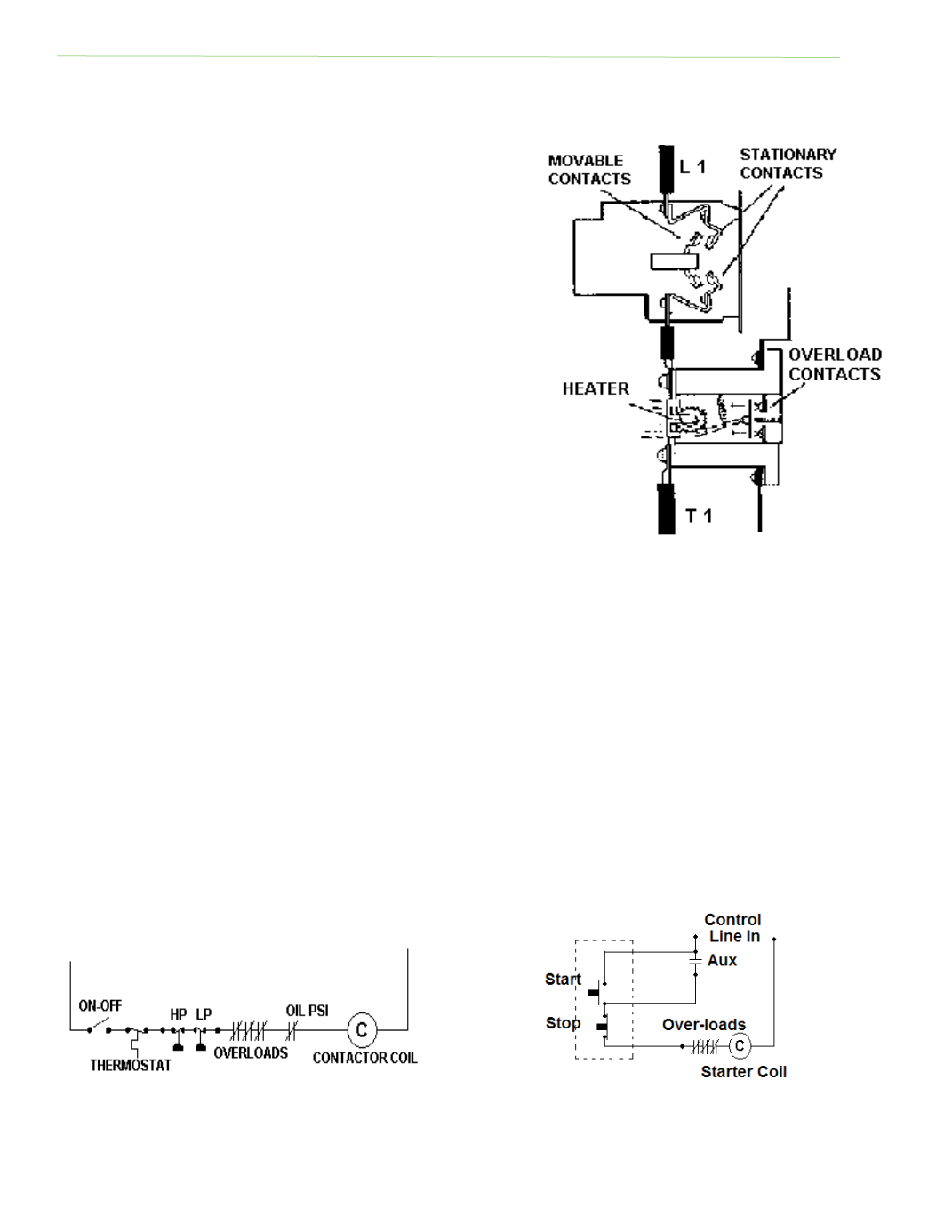

Page 32
Chapter 2: Circuits and Their Components
Electrical Theory & Applications for HVACR
LINE STARTERS
A line starter is basically a contactor with built‐in overload protectors. Line starters are oŌen used to
operate and protect three‐phase motors. Overloads protect the motor against excess amperage and
are more accurate than fuses. Overload protectors are
normally connected to the boƩom of the contactor and
sized to the amperage of the motor. One overload is
required for single‐phase power supply to the motor.
For a three‐phase line starter, there must be at least
two overloads. Supply voltage must flow through
heavy‐duty contacts and then through the overload
heater before traveling to the motor.
Overload heaters are connected in the high‐voltage
power supply in series with the motor. They are sized
to permit a specific amount of amperage before
producing heat. Excess amperage causes the heater to
generate heat that causes a nearby set of control
contacts to open. Overload contacts are connected in
series in the control circuit that supplies power to the
contactor coil. Figure 2‐27 shows a cut‐away view of
one leg of the contactor circuit and the connecƟng
overload.
A manual reset is provided to re‐close overload contacts aŌer the heater cools off. Heaters are
available in a wide variety of amperage capaciƟes and are normally sized to provide accurate motor
protecƟon at slightly above full‐load amps (FLA).
Three‐phase power supply to the motor is connected through heavy duty contacts, the heater, and
then the motor. Overload switches are connected in the control circuit to the contactor coil. Excess
amperage in a high‐voltage leg causes the overload contacts to open. Opening overload contacts
disconnects the power supply to the contactor coil, stopping the motor. A tripped overload switch
usually requires manual reset of the contact; any of the three heaters can open the contact. The line
starter also has one or two sets of auxiliary contacts, numbered 1, 2, and 3; one set is closed and one
open. These contacts can be used for many purposes, like connecƟon for start/stop switches,
interlock switches, and two power indicator lamps. It is not uncommon for a line voltage starter to
have a switch on the cover for selecƟng manual and automaƟc operaƟon.
Fig. 2‐27: Cutaway view of contactor and overload
Figure 2‐28: Overload circuit protecƟon
Figure 2‐29: Line voltage starter with start/stop switch










